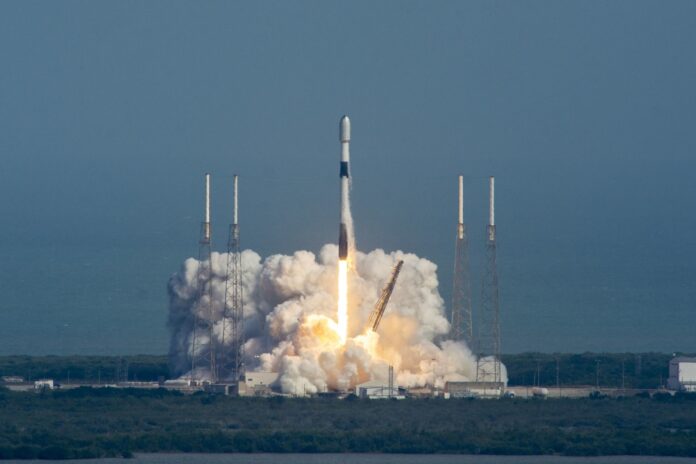SpaceX aborts launch of Falcon 9 rocket (with 15 Starlink satellites onboard) 5 seconds before countdown was to end
Africa Mobile Networks (AMN) is to use Starlink to provide backhaul for its base stations in remote and rural communities around the world. Starlink is SpaceX’s constellation of satellites in low Earth orbit (LEO).
AMN provides telecoms services to more than 10 million people in nearly 4,000 communities across 14 countries in sub-Saharan Africa via its towers. AMN’s own RAN technology delivers 2G (GSM), 3G (HSPA+) or 4G (LTE) from a single radio node, AMN Radio Node (ARN), on its low-cost base stations.
ARN is a multi-carrier and multi-technology (2G/3G/4G) radio node which can operate with up to five carriers simultaneously in either 2G+3G or 2G+4G configuration. It can support up to 5,000 subscribers per node, or up to 15,000 subscribers on AMN’s 20m towers with three sectors.
AMN manufactures ARN in the UK and has recently expanded its production line to manufacture about 4,000 units annually. AMN says the Starlink deal will enable it to offer economically sustainable 3G and 4G services to rural communities.
Nigerian market
AMN plans to deploy Starlink terminals at sites in Nigeria during 2023 as part of a wider project to connect 700 additional rural communities before the end of this year. AMN operates more than 1,000 sites in Nigeria, and expects to reach 2,000 by the end of Q2 2024.
Chad Gibbs, SpaceX’s Vice President of Starlink Business Operations. “Today’s announcement for the first cellular network in Africa to use Starlink for backhaul is an important milestone.
Huge appetite
Mike Darcy, CEO at AMN Group, said, “The low-latency and high-speed backhaul from Starlink combined with AMN’s flexible ARN allows us to deliver 3G and 4G – and later 5G – services to remote communities anywhere in the world. We are already moving quickly in Nigeria – where we have more than 1,000 base stations in service today – to connect more unconnected communities, and we see huge appetite for data services in many of these locations.”
In addition to 10,000 base stations in Africa, AMN is moving into Latin America and will offer services from 2024.
Space-X aborts launch
SpaceX scheduled a launch of 15 of its Starlink satellites from Vandenberg Space Force Base in California on a Falcon 9 rocket on Wednesday, 19 July, at 08:25 BST. Five seconds before countdown was supposed to end, the launch was aborted. The reasons are not yet known but the rocket and satellites are apparently in good shape. A spokesperson said another launch will be attempted tomorrow.
Last week, on 14 July in Florida, SpaceX cancelled the launch of another Falcon 9 less than a minute before it was due to take off, with a payload of 54 Starlink satellites. It was launched without incident the following day.
Generic Starlink mission photo courtesy of SpaceX



